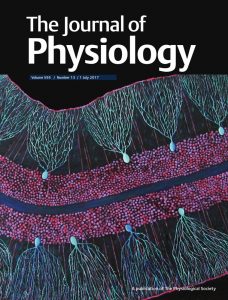Publications

Early structural and functional signature of 3-day human skeletal muscle disuse using the dry immersion model
Authors: R. Demangel, L. Treffel, G. Py, T. Brioche, A.F. Pagano, M. Bareille, A. Beck, L. Pessemesse, R. Candau, C. Gharib, A. Chopard, C. Millet
Affiliations: Universit´e de Montpellier, INRA, UMR866 Dynamique Musculaire et M´etabolisme, Montpellier, France
Journal: The Journal of Physiology - July 2017, Volume 595, Issue 13, Pages 4301-4315 (DOI: 10.1113/JP273895)
-
Field & Applications:
- Medical
- Space medicine / Gravitational physiology
Microgravity and hypoactivity are associated with skeletal muscle deconditioning. The decrease of muscle mass follows an exponential decay, with major changes in the first days. The purpose of the study was to dissect out the effects of a short-term 3-day dry immersion (DI) on human quadriceps muscle function and structure. The DI model, by suppressing all support zones, accurately reproduces the effects of microgravity. Twelve healthy volunteers (32 ± 5 years) completed 3 days of DI. Muscle function was investigated through maximal voluntary contraction (MVC) tests and muscle viscoelasticity. Structural experiments were performed using MRI analysis and invasive experiments on muscle fibres. Our results indicated a significant 9.1% decrease of the normalized MVC constant (P = 0.048). Contraction and relaxation modelization kinetics reported modifications related to torque generation (kACT = −29%; P = 0.014) and to the relaxation phase (kREL = +34%; P = 0.040) after 3 days of DI. Muscle viscoelasticity was also altered. From day one, rectus femoris stiffness and tone decreased by, respectively, 7.3% (P = 0.002) and 10.2% (P = 0.002), and rectus femoris elasticity decreased by 31.5% (P = 0.004) after 3 days of DI. At the cellular level, 3 days of DI translated into a significant atrophy of type I muscle fibres (−10.6 ± 12.1%, P = 0.027) and an increased proportion of hybrid, type I/IIX fibre co-expression. Finally, we report an increase (6-fold; P = 0.002) in NCAM+ muscle fibres, showing an early denervation process. This study is the first to report experiments performed in Europe investigating human short-term DI-induced muscle adaptations, and contributes to deciphering the early changes and biomarkers of skeletal muscle deconditioning.
Key points
- Our study contributes to the characterization of muscle loss and weakness processes induced by a sedentary life style, chronic hypoactivity, clinical bed rest, immobilization and microgravity.
- This study, by bringing together integrated and cellular evaluation of muscle structure and function, identifies the early functional markers and biomarkers of muscle deconditioning.
- Three days of muscle disuse in healthy adult subjects is sufficient to significantly decrease muscle mass, tone and force, and to induce changes in function relating to a weakness in aerobic metabolism and muscle fibre denervation.
- The outcomes of this study should be considered in the development of an early muscle loss prevention programme and/or the development of pre-conditioning programmes required before clinical bed rest, immobilization and spaceflight travel.


